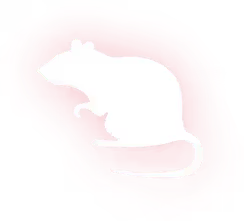

Roach Exterminator in Redland, TX
Cockroach extermination in Redland, TX from Spot On Pest Control, LLC. Sanitation support and effective treatment with follow-up—protect your home now.

Roach Exterminator in Redland, TX
Cockroaches are more than an annoyance; in Redland, TX they are a health and property concern that can quickly escalate if not handled with cockroach-specific control. This page explains what professional roach extermination looks like in Redland homes: how species are identified, how targeted treatment plans are built, what sanitation and habitat reduction actions matter, expected treatment schedules, and practical tips to prevent reinfestation. The goal is to give clear, expert information so you know what to expect from professional cockroach control and why timely action matters.
Why roach control is important in Redland, TX
Redland’s warm, humid climate and seasonal storms create ideal conditions for cockroaches. High humidity supports more active breeding and survival, while heavy rains and landscaping can drive roaches indoors. Cockroaches contaminate food surfaces, trigger allergies and asthma, and can spread bacteria. Effective control reduces health risks and restores comfort in your home.

Common cockroach species in Redland, TX
Identifying the species guides the treatment. The most common species found in Redland homes include:
- German cockroach: Small, light brown, quick breeders. Common in kitchens and bathrooms. Often requires indoor-focused treatments and baits.
- American cockroach: Larger, reddish-brown. Prefers basements, crawlspaces, sewer connections, and warm outdoor areas near structures.
- Oriental cockroach: Dark, slower-moving. Likes cool, damp spots such as under porches, in garages, and in leaf litter.
- Brown-banded cockroach: Smaller, bands across wings, often found in high areas like ceilings, inside appliances, and furniture.
Recognizing droppings, egg cases (oothecae), smear marks, shed skins, and live sightings helps determine population size and species.
Inspection and diagnosis process
Professional roach control begins with a thorough inspection to map activity and entry points. Key inspection steps:
- Check kitchens, bathrooms, laundry areas, crawlspaces, and attics for signs.
- Identify harborage sites: appliance voids, cabinetry, wall voids, drains, and exterior mulch or debris.
- Look for moisture sources and structural gaps that allow access from outdoors.
- Place monitoring traps to confirm species and activity levels.
A clear diagnosis lets the technician choose the most effective, least disruptive treatments for your home.
Targeted treatment plans
A cockroach-specific control plan combines multiple methods tailored to species and home layout. Typical components include:
- Gel baits and systemic baits: Highly effective for German and brown-banded roaches. Gel baits are applied in cracks, crevices, and behind appliances where roaches feed and share bait with the nest.
- Residual liquid treatments: Applied to baseboards, wall voids, and perimeter zones to create a protective barrier. Best for American and Oriental roaches that travel indoors from outside harborage.
- Dusts and desiccants: Boric acid and silica-based dusts work in voids, wall cavities, and behind outlets where liquids and gels cannot reach.
- Insect growth regulators (IGRs): Disrupt development and prevent immature roaches from reaching adulthood, reducing population rebound.
- Monitoring traps: Used after treatment to track activity and confirm control success.
Treatment selection is species-specific. For example, heavy German roach infestations rely more on internal baiting and IGRs, while American roaches often require exterior perimeter work and sanitation to limit indoor entry.
Sanitation and habitat reduction
Chemical treatments alone rarely produce lasting control without habitat modification. Key sanitation and exclusion steps for Redland homes:
- Eliminate food and water sources: seal food in containers, fix leaks under sinks, and avoid leaving pet food out overnight.
- Reduce clutter and cardboard where roaches hide and breed.
- Clean behind and under major appliances regularly to remove grease and crumbs.
- Seal gaps around pipes, vents, and foundation cracks with caulk or foam.
- Maintain dryer venting and clear debris from gutters and downspouts to discourage outdoor harborage.
- Keep landscaping trimmed and mulch away from foundation edges to reduce outdoor hiding spots.
These measures complement professional treatments and decrease the chance of reinfestation.
Expected treatment schedule and follow-up
Cockroach control is a process. A common treatment timeline looks like this:
- Initial inspection and first treatment: Detailed assessment and targeted application of baits, residuals, or dusts.
- Follow-up visit (7 to 21 days): Reassess activity, refresh baits, and apply additional residuals or dusts if needed. IGRs may be added based on findings.
- Intermediate monitoring (30 to 45 days): Check traps and signs to confirm population decline. Make adjustments if new activity is detected.
- Maintenance checks (every 2 to 3 months as needed): For severe infestations or seasonal pressures, periodic monitoring and targeted spot treatments help keep roaches suppressed.
Complete elimination can take several weeks for heavy infestations, especially with German roaches, because of rapid reproduction and hidden harborages.
Follow-up services and monitoring
Long-term success depends on consistent monitoring and rapid response to any new signs. Typical follow-up services include:
- Routine trap checks and activity reports.
- Re-baiting and spot treatments in identified hot spots.
- Seasonal perimeter treatments to address outdoor pressure in hot, humid months.
- Guidance on additional exclusion or moisture control steps specific to your home.
Monitoring provides data to adjust strategies without broad, repeated chemical use.
Preventing reinfestation in Redland homes
To keep cockroaches out after professional treatment, prioritize these practical steps:
- Maintain good sanitation and promptly address water leaks.
- Store dry goods in sealed containers and remove food waste regularly.
- Install door sweeps and weatherstripping to block entry points.
- Keep exterior lights and landscaping positioned to minimize attracting insects near doorways.
- Inspect packages and used furniture before bringing them indoors.
- Schedule seasonal checks after heavy storms or during humid summer months when roach activity spikes.
Conclusion: benefits of targeted roach control in Redland, TX
Targeted, species-specific roach control protects health, reduces allergens, and preserves the comfort and safety of your home. In Redland’s warm, humid environment, combining professional inspection, tailored treatments, sanitation, and ongoing monitoring delivers the best long-term results. With focused steps to eliminate food, water, and access, you can significantly lower the risk of recurring cockroach problems and maintain a healthier living environment.
Stop Roaches at the Source With Proven, Targeted Treatments
Seeing roaches in your kitchen or bathroom? Roach exterminator in Redland, TX services from Spot On Pest Control, LLC are built for fast, species-specific control that goes beyond surface sprays. Our professionals identify the exact species, apply targeted baits and residuals, and give you a step-by-step sanitation plan to eliminate what’s attracting them. Don’t let a small sighting turn into a full infestation — act early and protect your home from health risks and property damage.
Choose Spot On Pest Control, LLC for Reliable, Species-Specific Roach Elimination
Our Services
Our pest control services cover ants, termites, bed bugs, rodents, mosquitoes, and other common pests, with customized solutions for both residential and commercial properties.
.png)


